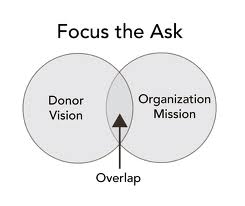 DonorDreams blog is honored to be hosting the May 2013 Nonprofit Blog Carnival. The theme this month is “Dear board volunteer . . .” and the idea is “If you could write an anonymous letter to a nonprofit board about something they do that drives you crazy, what would that letter look like and what suggested solutions would you include?” If you are a blogger and would like more information on how to participate and submit a post for consideration, please click here to learn more.
DonorDreams blog is honored to be hosting the May 2013 Nonprofit Blog Carnival. The theme this month is “Dear board volunteer . . .” and the idea is “If you could write an anonymous letter to a nonprofit board about something they do that drives you crazy, what would that letter look like and what suggested solutions would you include?” If you are a blogger and would like more information on how to participate and submit a post for consideration, please click here to learn more.
I wanted to expand the Nonprofit Blog Carnival concept in May. So, I reached out to real non-profit professionals and asked them to also write an anonymous letter to their board volunteers. These people are executive directors, fundraising professionals, board members, donors, community volunteers, consultants and front line staff. I promised everyone anonymity in exchange for their submissions.
We will celebrate May’s Nonprofit Blog Carnival on Wednesday, May 29, 2013. Up to that fun-filled day, I will publish real anonymous letters every day from real non-profit professionals right here at DonorDreams blog.
I hope you enjoy this real look at real issues that our community deals with on a daily basis.
Today’s anonymous letter is a little different from Wednesday and Thursday’s submissions. This contributor decided to take on the persona of the iconic advice columnist Dear Abby.
Here is today’s letter:
Dear Abby,
It seems like every time I need a board member to do something really important, they have a conflict, are too busy, or are uncomfortable with the task. Please help!
Sincerely,
Hoping for ChangeDear Hope,
On a summer evening two years ago, I received a call from one of our staff letting me know that a 17-year-old boy, named John had come to the Club after hours looking for help. John, who was in foster care and has cognitive disabilities, had an argument with his foster mother and she kicked him out of her car on a busy road. John was totally alone, but he found his way to the one place he knew was safe – the Boys & Girls Club.
The Club staff called John’s “in case of emergency” contacts to no avail. His foster mother refused to pick him up, his caseworker was busy. As I received these updates, I became acutely aware of the life my own two children were living. It was after dinner, I was reading them stories, our house had just been professionally cleaned. I began to cry as I thought about the stark contrast between my own children’s life and the life of this most vulnerable boy.
This could have been the day I decided my work was too depressing. Thankfully, this moment became a turning point for me. This is when I realized that what I do is more than just a job. Although, I wasn’t there to open the door for John that night, I knew that I had the power to open a door for others like him. Not only do I owe this to “those” kids, but to my own kids. I owe it to them to do everything in my power to make sure that they do not have to live in a world where a vulnerable child who is left on a busy street at night has no place to turn. This is what I think of when I have too much on my plate, or am uncomfortable with the task ahead of me.
I tell you this story not to sadden you, but rather to shake your board into finding their story.
What is their motivation for being involved? Too often, I hear from board members that they are too busy to attend meetings, have too much on their plates, or are uncomfortable with fundraising. These are frustrating comments to hear – especially as I think about John. In order to be successful as a board member, one must find the story that will motivate them to serve, even in the most difficult of circumstances.
The good news is John still finds his way to the Boys & Girls Club everyday. He is living in a group home with other young adults who have disabilities. He is now a Club volunteer and loves spending his time helping staff maintain the technology labs. The Club is a family for John, but the Club staff and kids also think of John as a part of their patchwork family.
I hope your board has the opportunity to one day find their story. It will change their lives and the lives of many others. When this story is found, the job of a board member becomes more than a series of meetings and tasks. It will be the catalyst for a better, more purposeful life for those you serve and those you love.
Sincerely,
Mission-focused Mary
If you have some advice for the author of our anonymous letter, please be respectful and share it in the comment box at the bottom of this post.
If you want to submit an anonymous letter for consideration this month, please email it to me at the address in your signature block below.
Here’s to your health!
Erik Anderson
Founder & President, The Healthy Non-Profit LLC
www.thehealthynonprofit.com
erik@thehealthynonprofit.com
http://twitter.com/#!/eanderson847
http://www.facebook.com/eanderson847
http://www.linkedin.com/in/erikanderson847






 It is that time of the year when retailers are pulling out every stop in their little bag of tricks to get your attention and hopefully your holiday dollars. One of those shiny objects that some retailers use is called cause related marketing (CRM). Wikipedia does a nice job of
It is that time of the year when retailers are pulling out every stop in their little bag of tricks to get your attention and hopefully your holiday dollars. One of those shiny objects that some retailers use is called cause related marketing (CRM). Wikipedia does a nice job of  When I hear one donor say something once, I chalk it up to something interesting. When I hear two donors say the same thing, I usually think it is an interesting occurence. However, when three or more donors express the same sentiment, I sit up . . . take notice . . . and treat it like a potential trend.
When I hear one donor say something once, I chalk it up to something interesting. When I hear two donors say the same thing, I usually think it is an interesting occurence. However, when three or more donors express the same sentiment, I sit up . . . take notice . . . and treat it like a potential trend. While fear is irrational, it definitely impacts human behavior. I believe most students learn this in Psychology 101. So, if people “think” the sky is falling, it is falling regardless of the facts.
While fear is irrational, it definitely impacts human behavior. I believe most students learn this in Psychology 101. So, if people “think” the sky is falling, it is falling regardless of the facts. Here are a few quick tips you may want to remember when jumping into these discussions:
Here are a few quick tips you may want to remember when jumping into these discussions:











